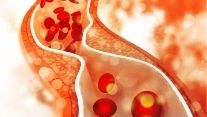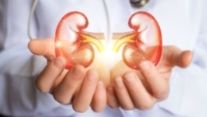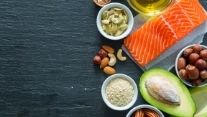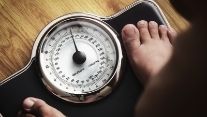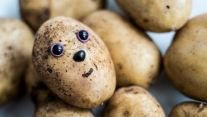Author Name: StartRight
Low carbohydrate (low-carb) diet is becoming a fad of diet-culture but not without its unhealthy side-effects. The basic premises of this diet (also the caveman diet, Stone Age, or steak or bacon diet):- we should consume what we have been biologically and genetically programmed for. Adopting Paleo Diet may be the right way to go about it.
Principles behind the Diet
A paleo dieter’s food choice is the restraint to what prehistoric mankind used to consume; food that could be hunted, fish or collected such as meat, fruits, and vegetables, fish, etc.
This diet is based on acknowledging the underlying reason behind increasing chronic diseases in the modern age people as embedded in the agricultural revolution.
Whole grains, legumes, and dairy products have resulted in numerous health issues ranging from obesity to allergy and heart to stroke.
However, the paleo diet is fueling the destruction of human health and our planet earth because a low carbohydrate diet means a diet rich highly rich in animal food and low in plant foods.
How Plants Play a Crucial Role in the Planet’s Health?
Only plant-food can synthesize carbohydrates (sugars) in the body. Different animal body parts consumed as food including red meat, poultry, seafood, fish, and eggs contain no carbohydrates. However, animal secretions like milk contain sugars synthesized by plants which our body can digest. For instance, the cow eats the grass that made the sugar in the body.
Original Atkins Diet and Its Side Effects
The original Atkins diet is the example of an ultimate low carb diet that works toward starving the body off carbohydrates to induce a state of illness also referred to as ketosis, initiating weight loss. But the consequence of this diet is- the person becomes too fragile and sick to overeating.
Improvised Atkins Diet
Apologists including Atkins Nutritionals have attempted alterations in this harmful diet (with very low carb eating) making a place for fruits and not starchy vegetables in this diet to compensate and disguise the unhealthy side effects of animal foods consumption at every meal.
Do and the Don’ts of Paleo Diet
Also known as the Paleolithic diet, this hunter-gatherer diet is commonly promoted as a weight loss diet which improves health and longevity. It consists of consuming animal-derived foods largely which are non-carbohydrate rich but high in protein and/or fat content. It consists mostly of meat, poultry, shellfish, fish and eggs, and non-starchy orange, green and yellow vegetables coupled with fruits and nuts.
All starchy food including grains, legumes, and potatoes are forbidden in this diet along with dairy products, salts, processed oils (except olive oil), and refined sugars.
The Presumption behind the Diet
The paleo diet is based on the presumption that our ancestors living in the Paleolithic age (10,000 -2.5 million years ago) used to consume whatever their surroundings afforded them ranging from fish to marine animals. As a result, this diet genetically adapts the primitive food hunting and gathering ideology for meeting bodily requirements of nutrients.
The Paleo Diet Book (Revised 2011)
The paleo diet book, the Bible for the diet-followers, written by Loren Cordain, Ph.D., Professor in the Department of Health Science at Colorado State University suggests that “the paleo diet is the one and the only diet that ideally fits our genetic makeup”.
In the book, he claims that every human being on earth has followed this diet in the past 2.5 million years ago until the agriculture revolution surfaced some 10,000 years ago with grains, legumes, and potatoes introduced worldwide. Additionally, he suggested the agricultural revolution marked the dawn of the civilization encompassed by our advanced state of intellectual, cultural, and material development coupled with progress in different spheres of life be it cultural front, lifestyle, or educational ground.
‘Often Told a Lie Becomes the Truth’
Although Paleo diet promoters claim our ancestors were hunter-gatherers eating whatever their surroundings provided them, their hypothesis has a flawed review. In tropical habitats, primitive mankind ate a variety of plant and animal foods. In certain environments, the majority of their calories used to come from protein but the major portions of their diet were the plants. This truth has been unpopular in part because of the well recognized human trait, sexism. While grandparents, children, and women did the gathering, men were the hunters.
Anthropologists, Nathanial Dominy, Ph.D. from Dartmouth College clarifies that it’s a myth that Hunter-gatherers calories come from plant foods. And in his support are the studies he conducted related to the bones, teeth, and the genetics of primates. It concludes “humans might be more appropriately described as starchivores”.
A journal nature published on June 27, 2012, states that almost the entire diet of our ancestors consisted of leaves, fruits, wood, and bark-a diet Similar to modern-day chimpanzees.
Hunter-gather Diet is Repulsive
According to Dr. Cordian, eating organs of another living being is not only repulsive but also non- practical for most human beings. A paleo follower is required to consume alligator, bear, kangaroo, deer, rattlesnake, and wild boar beside beef, pork, veal, chicken, and fish.
Since more than half of the diet’s food consists of lean meats, organ meats, fish, and seafood (grocery bought lean meat from cows, pigs, and chicken or wild animals for their bone marrow and brains; favorite of pre-civilization human gatherers), the diet is not relevant anymore.
Cannibalism and Our Ancestors
Archaeologists have traced bones of our ancestors with the flashing marks and traces of bone smashing for extracting marrow. Some victims including were found with their brains missing probably for consumption.
Can we justify become cannibal for a diet love??
Paleo Diet and Health Consequences
Paleo diet’s main constituents are arteries-clogging saturated fat and cholesterol along with bone damaging acidic proteins from animal food. Meat-eating populations especially Eskimos suffer from heart disease, osteoporosis, and other forms of atherosclerosis while plant diet followers (especially starchy food) are free from these issues.
However, now the defenders of this diet are adding non-starchy fruits and vegetables along with nuts and seeds to balance harmful nutrients from animal foods.
According to Dr. Cordain, a diet exceptionally rich in high animal protein can cause serious illness with nausea, vomiting, diarrhea, and eventually death from Protein toxicity also known as ‘Rabbit starvation’. Paleo diet, being high in protein (35% protein against 200 to 300 gms a day) contradict his emphasized dietary ceiling for protein.
Potential Dangers of Paleo Diet
Animal diet is void of dietary fiber; filthy disease-causing microbes enter the body with animal protein. It is contaminated with poisonous environmental chemicals from the food chain.
The June 21, 2020 issue of the British Medical journal updated on the long term health hazards of low-carb-high-protein diet.
Some Hidden Dangers of Palio Diet Are:-
Due to exclusion of cereal grains, the body loses control over blood sugar and there is an increased risk of chronic diseases. Additionally, the overuse of fat for energy often leads to dehydration and eventually, due to severe metabolic abnormalities. The body feels fatigued and exhausted throughout the day. There is an increased risk of kidney and heart diseases with certain cancers. The deficiency of calcium and vitamin D is also traced.
Also, due to the high intake of red meat and fat meat against the approximate 13 g of saturated fat per day, the follower intakes more than 50 g per day which increases LDL and susceptible to bowel cancer.
Most Verifiable Human History Trajectory
The most verifiable human history suggests the large population of our ancestors being plant-diet followers and not animals. Armies of Genghis Khan and Alexander the great who have conquered Europe and Asia were largely consumers of starch-based diets. And even today the major population of the world Lives in the ‘blue zones’.
Even the most common day illness can be killed by minimizing animal foods and eating calories from starches extracted from plant-based foods including grains, legumes, and potatoes.
Ecological Impact of the Paleo Diet
Animal rearing for food is one of the biggest causes of water pollution in the industrialized world. Additionally, animals for meat produce toxic gases such as ammonia and methane besides their contaminated feces. These together contribute to major climate impacts and health hazards.
Also, animals are a large consumer of grains for the production of a comparatively smaller quantity of meat, dairy foods, and eggs.
Be Vegan
A purely vegetarian diet uses lesser water for production in comparison to meat. So deforestation and overgrazing can be avoided if the planet’s inhabitants switch over to a plant-based diet.
“Eat real food – mind what you eat”
Good healthy food is not a result of a short term diet. It’s a lifestyle change for happiness and prosperity.

















